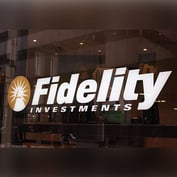With scandal engulfing Barclays and its manipulation of the LIBOR being called the largest market fraud in history (it affected $800 trillion in contracts), it got us wondering about other large schemes that harmed entire markets.
Throughout history, financial scams have roiled markets, but a con man has to be truly brazen to base his scheme on manipulating a market rather than a single company or stock.
With lawmakers already holding hearings on the LIBOR fiasco, it will be interesting to see if any of the players involved from Barclays, the British government or other banks will be brought before the bar of justice.
At AdvisorOne we’ve compiled a look at five of history’s brazen crooks who defrauded markets. Don’t worry, justice caught up with the all of the perpetrators. Then again, that hasn’t stopped the next schemer from trying his hand at stealing a fortune.
 5. Alves dos Reis Nearly Bankrupts a Nation
5. Alves dos Reis Nearly Bankrupts a Nation
Cost: $1 million pounds in 1925 or 1% of Portgual’s GDP
Penalty: 20-year prison sentence
Plenty has been written about the size of Bernard Madoff’s scheme ($20 billion or so in principal lost, more if you count the fake balances shown to investors) but the world’s largest Ponzi scheme didn’t come close to toppling a currency.
That trick was nearly turned by Alves dos Reis and his counterfeiting scheme in Portugal in 1925. By all accounts, dos Reis had humble beginnings in Lisbon. Clearly he craved wealth and didn’t care how he attained it.
After avoiding serious jail time on a technicality for a scheme to take over a mining company, he set his sights higher. Through a series of shady deals he was able to flood the Portuguese market with 200,000, 500-ecudo notes. That amount represented 1% of the country’s GDP.
When things started to get hot, dos Reis tried to acquire controlling interest in the Bank of Portugal in a bid to avoid any serious inquiry. It didn’t work, and dos Reis was finally convicted in 1930 and sentenced to 20 years in prison. Released after 15 years, he was later nabbed for a coffee scheme in Angola, although he served no jail time. Forced back to his humble roots, he died in 1955.
The Portuguese currency recovered but not before overcoming doubts about its stability.
 4. The Hunt Brothers Corner the Silver Market
4. The Hunt Brothers Corner the Silver Market
Cost: $100 million in missed deliveries
Penalty: William and Nelson banned from trading, ordered to sell their silver holdings, fined $10 million each
In 1973, silver was trading at $2 an ounce. The Hunt brothers, William and Nelson, saw an opportunity and set about buying silver futures. A lot of silver futures. With the help of backers in Saudi Arabia, the brothers amassed 200 million ounces worth by 1980. They made $2 billion to $4 billion from their scheme.
The price had reached $50 an ounce, but the Hunts wanted more. They imagined a price of $200 or even $300. Alas, it wasn’t to be. Like many who tried to corner a market, they were foiled by regulators. The Commodities Exchange decided to stop the Hunts before they could reap their windfall.
A new regulation, Silver Rule 7, made it harder for one contract holder to control too much of the market. That led to March 27, 1980, when the Hunts were unable to deliver on a margin call worth $100 million. The day became forever known as Silver Thursday when the price collapsed by 50%.
After years of legal wrangling the Hunts were forced to divest and paid their hefty fine.
 3. Yasuo Hamanaka Controls Copper
3. Yasuo Hamanaka Controls Copper
Cost: At least $1.8 billion
Penalty: 8 years in prison








 July 11, 2012 at 05:00 AM
July 11, 2012 at 05:00 AM











 2. Kenneth Lay’s Enron Drives Up Power Prices
2. Kenneth Lay’s Enron Drives Up Power Prices 1. Charles Keating Jr.: Symbol of the S&L Meltdown
1. Charles Keating Jr.: Symbol of the S&L Meltdown